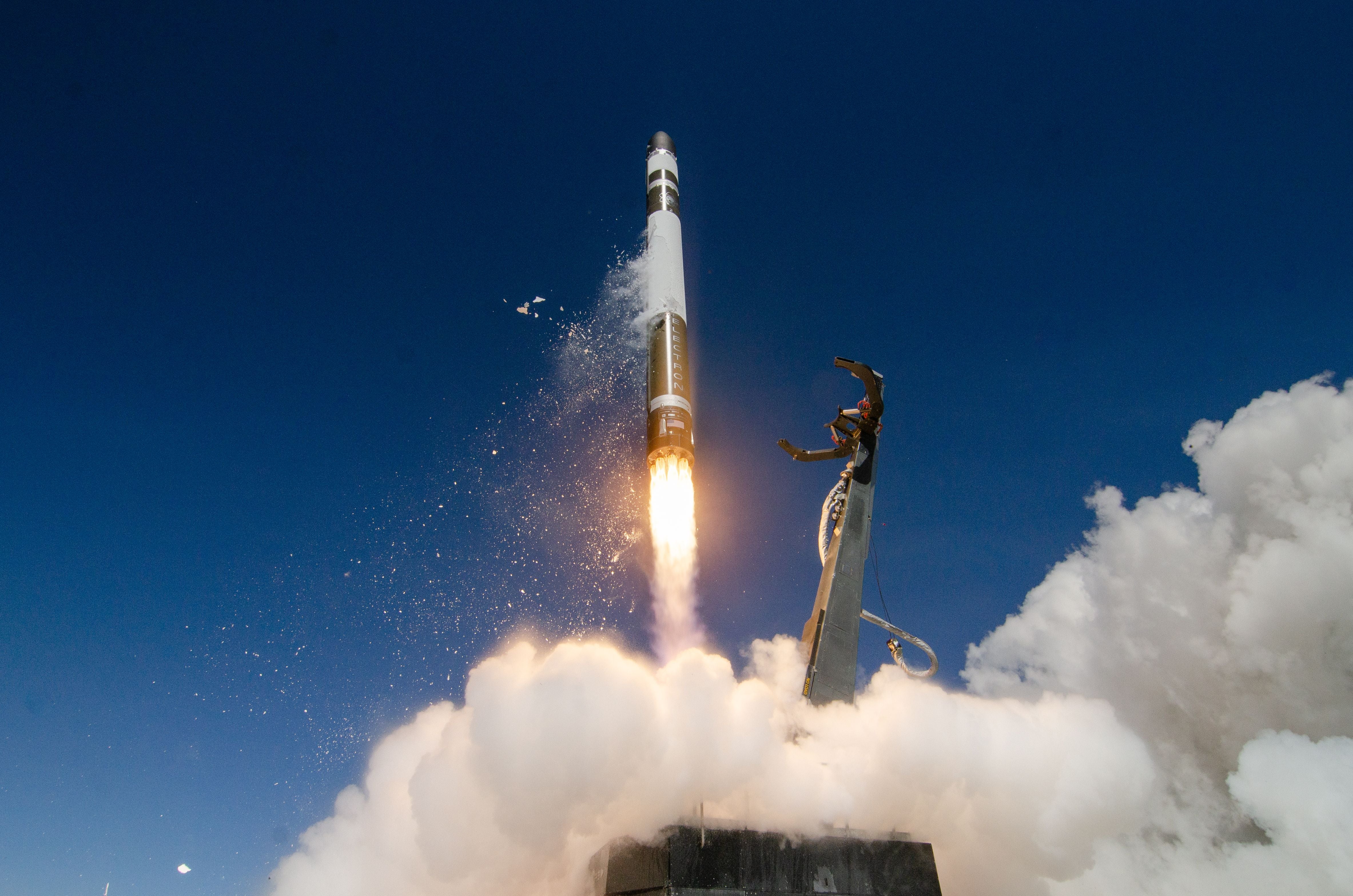Private aerospace company Rocket Lab just pulled off a mid-air capture of a rocket booster as it plunged its way back through Earth’s atmosphere, hooking it with a long rope attached to a helicopter. The mission, dubbed “There and Back Again,” also deployed 34 satellites to orbit on Monday.
The Electron rocket took off from Rocket Lab’s launch complex in New Zealand’s Māhia Peninsula at 8:49 p.m. AEST yesterday. Shortly after launch, the rocket’s first stage (the first of its two engines) separated from the second stage, which then delivered the satellite payloads to orbit.
Its job complete, the first stage then fell back to Earth, hurtling through the atmosphere at speeds reaching 8,047 km per hour. A customised Sikorsky S-92 had previously taken its position over the Pacific Ocean in wait. As the booster fell, two parachutes were deployed in sequence, slowing it to a manageable speed. The helicopter snagged the parachute line with a hook when the booster was some 1,981.20 m above the surface.

Although the helicopter was meant to carry the rocket booster to shore, its pilots decided to drop it into the ocean, which they did upon noticing “different load characteristics” than those experienced during previous test flights, according to a Rocket Lab release. The pilots “did release it after hook up as they were not happy with the way [the helicopter] was flying,” Rocket Lab CEO Peter Beck wrote on Twitter. “But no big deal, the rocket splashed down safely and the ship is loading it now,” he added.
The company is seeking to recover and reuse Electron rocket boosters for future launches, primarily by avoiding water damage to the engine from an ocean splashdown. Rocket Lab wants to reduce costs of spaceflight by reusing its boosters, similar to how SpaceX re-uses its Falcon 9 rocket, though SpaceX does so by having its boosters perform vertical landings on landing pads or offshore platforms.
This is what it looked like from the front seats. pic.twitter.com/AwZfuWjwQD
— Peter Beck (@Peter_J_Beck) May 3, 2022
Monday’s mission marked the first time Rocket Lab had attempted to catch a rocket booster as it made its way back from space. The company had previously recovered and analysed three of its rocket boosters from the ocean, which informed the design of protective shielding for atmospheric re-entry.
“Bringing a rocket back from space and catching it with a helicopter is something of a supersonic ballet,” Beck said in a statement. “From here we’ll assess the stage and determine what changes we might want to make to the system and procedures for the next helicopter catch and eventual re-flight.”
As of yesterday’s launch, Rocket Lab has now deployed a total of 146 satellites to low Earth orbit for NASA, the U.S. Space Force, the National Reconnaissance Office, and others. This latest payload included satellites designed to monitor light pollution, demonstrate space junk removal technologies, and enable internet from space.
